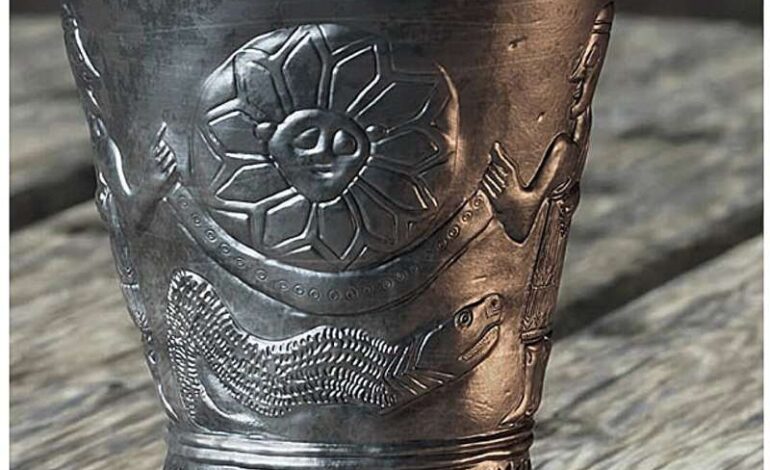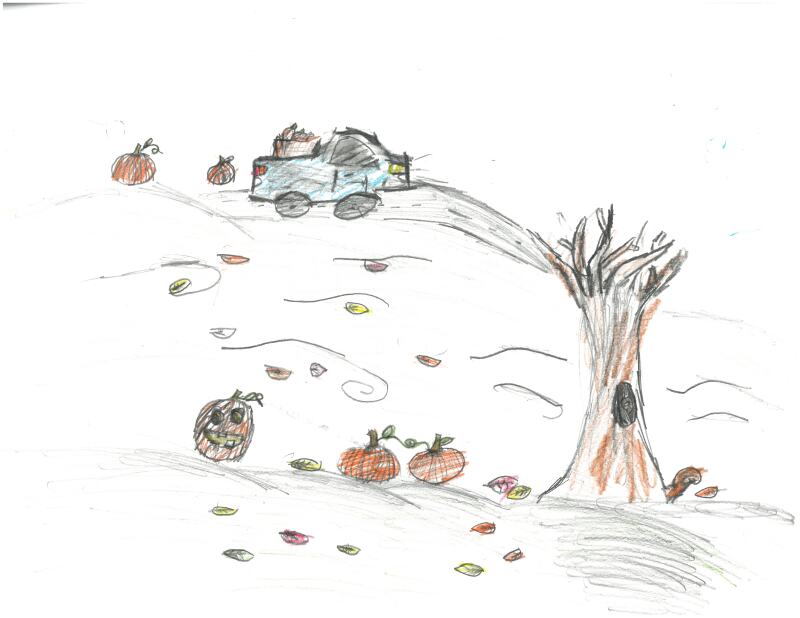Ancient Goblet’s Imagery Suggests New Cosmic Creation Narrative

A new study suggests that the imagery on the ancient ˁAin Samiya goblet may depict a cosmic creation story rather than the widely accepted Babylonian Enuma Elish myth. This silver vessel, measuring 8 cm tall, dates back to the Intermediate Bronze Age (circa 2650–1950 BCE) and was unearthed from a tomb in the Judean Hills approximately 55 years ago. The findings are detailed in research published in the Journal of the Ancient Near Eastern Society “Ex Oriente Lux,” challenging long-held interpretations of the goblet’s significance.
The ˁAin Samiya goblet stands out as a rare example of art from this period in the Levant region. Its exterior features a series of intricate scenes, although damage to the goblet has complicated interpretations. Visible elements include a humanoid figure combined with animal features, holding plant-like objects in its hands, and a celestial-looking rosette positioned between its legs. The legs appear to belong to two bulls that extend from the figure’s torso. Adjacent to this chimera is a large snake, which later appears subdued in the following scene.
This second scene depicts two human figures supporting a crescent shape that cradles a sun with a face—known as en face. The snake’s posture shifts from assertive to subdued, lying flat beneath the crescent. Previously, scholars like Yigael Yadin posited that the goblet illustrated an early version of the Enuma Elish myth, where the god Marduk battles the sea goddess Tiamat, ultimately using her body to create the world. Critics, however, have pointed out that the imagery lacks any depiction of violence, and the Enuma Elish itself emerged approximately a millennium after the goblet’s creation.
The authors of the new study propose an alternate interpretation, suggesting the goblet’s imagery conveys a peaceful transition towards cosmic order rather than a specific mythological narrative. They argue that the first scene symbolizes chaos, while the second illustrates the establishment of order. They note that the sun deity, represented by the rosette, evolves from a small, newly born entity in the first scene to a more dominant figure in the second, radiating strength and joy.
The study’s authors explain, “The artist has effectively depicted the passage of time through a series of simple stylistic choices.” They highlight that the deities maintain similar sizes across both scenes, indicative of their immortality, yet they exhibit signs of evolution in their attire and adornments. The serpent, once a symbol of chaos, visually ages and becomes subdued, reflecting the triumph of the gods in maintaining cosmic order.
This research draws parallels with other artistic representations of cosmological creation myths found throughout the Near East, including similarities with artworks from Egypt, Mesopotamia, and Anatolia. The crescent shape, often associated with celestial objects in various Near Eastern cultures, resonates with the sociocultural context of Bronze Age belief systems. The authors reference visual connections to the sarcophagus of Seti I and the bull-man relief from the Hittite sanctuary of Yazılıkaya, suggesting that the ˁAin Samiya goblet might represent an early interpretation of Mesopotamian iconography, possibly crafted by an artist from southern Mesopotamia.
Despite the compelling arguments presented in the study, uncertainties linger regarding the original creator’s intentions. The goblet’s condition at the time of discovery was not well documented, and interpretations rely heavily on iconographic parallels without direct textual evidence. Some scholars remain skeptical of the new interpretation. Mark Smith, a Biblical scholar at Princeton Theological Seminary, remarked to Smithsonian magazine that while the notion of the goblet depicting a Babylonian creation story may be incorrect, it is still unclear whether the imagery represents a creation myth at all.
The ongoing debate surrounding the ˁAin Samiya goblet underscores the complexities of interpreting ancient artifacts and their cultural significance. As researchers continue to explore these enigmatic works, the evolving understanding of ancient narratives enriches our comprehension of early human civilization.






